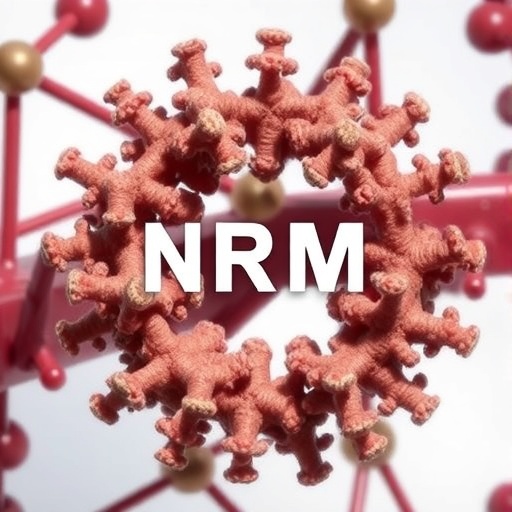In a groundbreaking study set to reshape our understanding of heavy metal tolerance in plants, researchers have uncovered the diverse functional capabilities of NRAMP (Natural Resistance-Associated Macrophage Protein) metal transporters in Onobrychis viciifolia. This research, spearheaded by a team including Li, D., Song, Y., and Shen, L., provides critical insights into how these transporters contribute to the plant’s ability to thrive in environments fraught with heavy metals. The findings promise to advance our knowledge of plant biology and could have significant implications for agriculture and environmental science.
Research into the mechanisms of heavy metal tolerance has gained momentum due to increasing soil contamination, which poses a threat to agricultural viability and food safety. The presence of heavy metals like cadmium, lead, and arsenic in soil can severely inhibit plant growth and development. However, certain plant species, notably legumes like Onobrychis viciifolia, have shown exceptional resilience in such challenging conditions. The discovery of how NRAMP transporters function in these species opens doors to potential agricultural applications and bioremediation strategies.
The NRAMP family of metal transporters is known for their versatility in transporting a range of metallic ions, including both essential and toxic metals. While previous studies have identified their roles in various plant species, the specific mechanisms by which these transporters operate in Onobrychis viciifolia remain largely unexplored. Li and colleagues aim to bridge this knowledge gap through a comprehensive genome-wide characterization of NRAMP genes linked to heavy metal tolerance.
Through high-throughput sequencing techniques, the researchers meticulously analyzed the genomic data of Onobrychis viciifolia. Their investigation led to the identification of multiple NRAMP genes, each exhibiting unique expression profiles based on environmental conditions and metal exposure. This revelation highlights the functional diversity within the NRAMP transporter family, illustrating how different members may contribute variably to heavy metal detoxification and tolerance in plants.
In their study, the authors performed extensive functional assays to evaluate the abilities of these NRAMP transporters in metal uptake and translocation. They discovered that some NRAMP proteins preferentially transport specific heavy metals, while others exhibit broader substrate specificity. These functional differences underscore the evolutionary adaptations that allow Onobrychis viciifolia to cope with excess metals, showcasing a fascinating example of plant resilience.
Moreover, the research identified the regulatory networks governing the expression of NRAMP genes under metal stress conditions. The authors explored the intricate signaling pathways that activate these transporters in response to heavy metal exposure. By elucidating how environmental stimuli influence the expression of these genes, this research not only sheds light on the molecular mechanisms of heavy metal tolerance but also points to potential biotechnological applications for improving crop resilience.
As agricultural systems face increasing stresses from soil contamination, understanding the genetic basis of heavy metal tolerance has never been more critical. The insights gained from this research can empower scientists to devise genetic engineering approaches aimed at enhancing the tolerance of economically important crops. By incorporating NRAMP genes from Onobrychis viciifolia into other plant species, there is potential to create varieties that can thrive in contaminated soils, bolstering food security in affected regions.
The functional diversity exhibited by NRAMP transporters is not solely limited to heavy metal tolerance; it also plays a crucial role in the overall metal homeostasis of plants. Essential micronutrients such as manganese, iron, and zinc are vital for plant health, and NRAMP transporters are implicated in their uptake. This dual role highlights the delicate balance that plants must maintain to avoid both deficiencies and toxicities, showcasing the evolutionary sophistication inherent in plant metal transport systems.
Furthermore, the study suggests that the evolution of NRAMP transporters in Onobrychis viciifolia reflects broader trends observed in legumes, which are renowned for their nitrogen-fixing capabilities. This connection hints at a larger narrative regarding the evolutionary pressures plants face in nutrient-deficient or metal-contaminated environments. As researchers continue to unravel these complex interactions, a more ecological understanding of plant evolution and adaptation emerges.
While the discoveries made in this study are promising, there remains much to explore. Future research could delve deeper into the gene regulatory networks identified, potentially utilizing CRISPR gene-editing technology to assess the functional roles of individual NRAMP genes more precisely. Additionally, comparative studies with other plant species could reveal commonalities and differences in metal transport mechanisms, enriching our understanding of plant resilience across the plant kingdom.
Ultimately, the groundbreaking work by Li and colleagues not only enhances our understanding of the NRAMP transporter family but also opens new avenues for the development of crops that are better equipped to withstand the pressures of heavy metal exposure. As the world faces mounting challenges related to soil contamination and food security, advancements in our understanding of plant biology will be crucial in informing sustainable agricultural practices. The implications of this research resonate beyond academic walls and could significantly impact global agricultural policies and practices.
In summary, the comprehensive genomic investigation of NRAMP metal transporters in Onobrychis viciifolia reveals a remarkable functional diversity that underpins the plant’s heavy metal tolerance. By bridging the gaps in our understanding of these transporters, this study sets the stage for transformative breakthroughs in crop improvement and environmental sustainability, shaping the future of agriculture in the face of emerging challenges.
Subject of Research: Heavy Metal Tolerance in Plants
Article Title: Genome-wide characterization of NRAMP metal transporters reveals functional diversity for heavy metal tolerance in Onobrychis viciifolia.
Article References:
Li, D., Song, Y., Shen, L. et al. Genome-wide characterization of NRAMP metal transporters reveals functional diversity for heavy metal tolerance in Onobrychis viciifolia.
BMC Genomics (2025). https://doi.org/10.1186/s12864-025-12356-5
Image Credits: AI Generated
DOI: 10.1186/s12864-025-12356-5
Keywords: NRAMP transporters, heavy metal tolerance, Onobrychis viciifolia, plant biology, crop improvement, genome-wide analysis.




